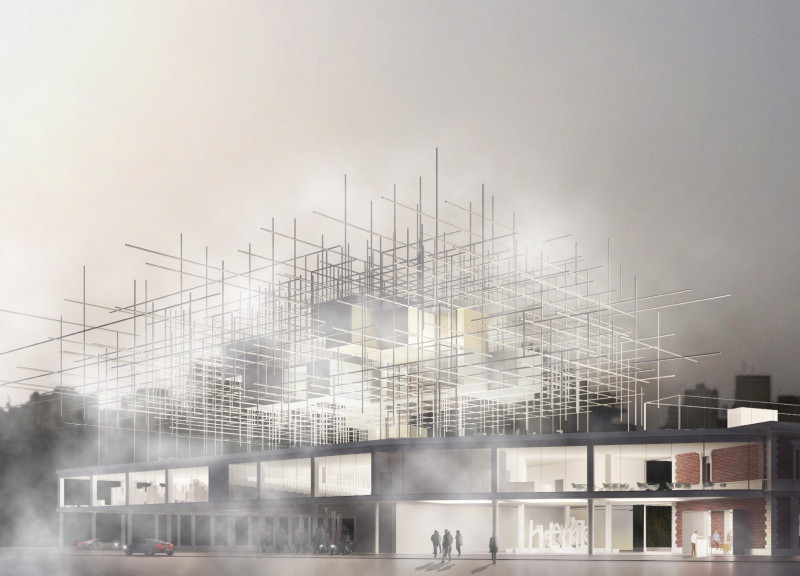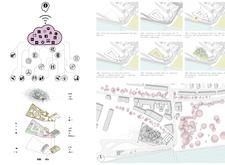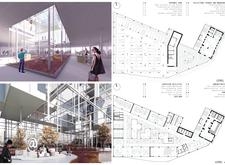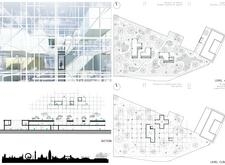5 key facts about this project
**Project Overview**
Located within the London Internet Museum, the architectural design known as "The Cloud" addresses contemporary societal shifts influenced by digital technology. The project aims to visualize the relationship between users and creators of digital spaces, reflecting on the profound impact of the internet since its emergence in the 1960s. The design merges virtual concepts with physical architectural elements, presenting a structure that encapsulates themes of transparency, accessibility, and the expansive nature of technology.
**Spatial Strategy and Design Layers**
The layout comprises multiple levels, each serving distinct functions while fostering an immersive experience. Level 0, the ground floor, functions as the main entrance, featuring administrative areas, educational facilities, and communal galleries. Levels +1 and +2 house the primary exhibition spaces, designed to be adaptable and encourage fluid movement among visitors, enhancing engagement with the exhibits on internet culture. The apex, referred to as the Cloud Level, offers observation decks and relaxation areas with panoramic views of London, symbolizing a connection to the information networks represented by the cloud concept.
**Material Palette and User Experience**
The material selection is integral to the design, emphasizing both functionality and aesthetic coherence. A steel framework establishes an airy structure that supports the museum’s galleries while permitting natural light to penetrate throughout. Glass facades enhance the building's transparency, inviting interaction with the urban environment. Concrete bases provide structural integrity, contrasting the ethereal upper levels, while wooden elements within the interior introduce warmth and intimacy. The surrounding landscape features enrich user experience, promoting movement and interaction with the adjacent urban landscape through thoughtfully designed green spaces and pathways.





















































